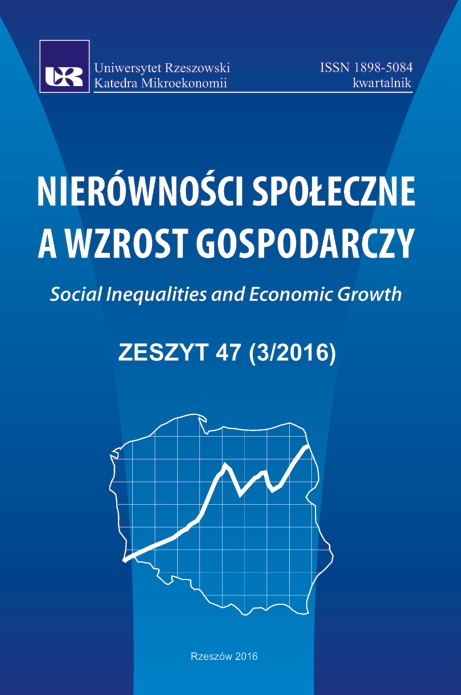Aktywne formy przeciwdziałania wykluczeniu społecznemu
The Active Forms as the Counter-Measure to Social Exclusion
Author(s): Marta DaneckaSubject(s): Economy, Economic policy, Welfare systems, Socio-Economic Research
Published by: Wydawnictwo Uniwersytetu Rzeszowskiego
Keywords: social help; social economy; social welfare programs; activation; unemployment
Summary/Abstract: The article touched a problem of social exclusion in the context of the return to the labor market. The starting point is the lack of activation of people excluded by social assistance. It also stresses the side effects experienced by its protégés: passivity, inheritance lifestyle based on social benefits and lack of motivation to integrate with the local community.The guidelines for the directions of social policies within the EU development model meant that social policy, in particular the so-called activation policy seeks methods to counteract these pathologies. By incorporating social economy entities and non-governmental sector to carry out tasks at the level of social assistance it was given the chance to depart from treating social assistance as an institution of social transfers.Created multisectorial social assistance is based on three pillars: welfare (traditional), pro-employment and reintegration, which is implemented through the creation of social employment institutions. The new system involves conditioning aid. The article presents the basic data ofthe social employment and its beneficiaries. It should be noted that the main problem in the process of activation of the long-term unemployed is very low effectiveness and a very marginal effect of their employment after completing the course. This issue is shown from two perspectives: quantitative – with statistical indicators and qualitative – determination motivation to undertake the activity. There is a statistical picture of two indicators: the completion of training and economic independence. The qualitative perspective is based on the results of surveys dedicated to the theme of client’s attitudes to social and economic activation and their work in the future.
Journal: Nierówności Społeczne a Wzrost Gospodarczy
- Issue Year: 2016
- Issue No: 47
- Page Range: 273-289
- Page Count: 17
- Language: Polish

